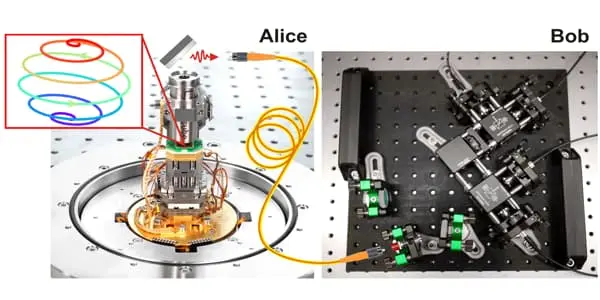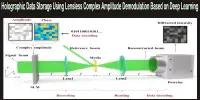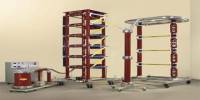Many applications that make use of quantum effects require light to be in a specific state, namely a single-photon state. But what is the best method for producing such single-photon states? Researchers have now proposed a completely new approach.
Following the “first quantum revolution,” which resulted in the development of devices such as lasers and the atomic clock, the “second quantum revolution” is now in full swing. Experts from around the world are working to create fundamentally new technologies based on quantum physics. Quantum communication, in which information is written and sent in light, is a key application. Many applications that make use of quantum effects require light to be in a specific state, namely a single-photon state. But what is the best method for producing such single-photon states? Researchers from Münster, Bayreuth, and Berlin (Germany) have now proposed an entirely new method of preparing quantum systems in order to develop components for quantum technology in the PRX Quantum journal.
Quantum dots are excellent for generating single photons, and we do it almost every day in our labs. But there is still much room for improvement, especially in transferring this technology from the lab to real applications.
Dr. Tobias Heindel
Experts believe that using quantum systems to generate single-photon states is extremely promising. A quantum dot is a well-known example of such a quantum system. This is a semiconductor structure with a size of only a few nanometres. Laser pulses can be used to control quantum dots. Although quantum dots have properties similar to atoms, they are embedded in a crystal matrix, making them more practical for applications.
“Quantum dots are excellent for generating single photons, and we do it almost every day in our labs,” says Dr. Tobias Heindel, who directs a quantum communication experimental lab at the Technical University of Berlin. “But there is still much room for improvement, especially in transferring this technology from the lab to real applications,” he adds.
Separating the generated single photons from the exciting laser pulse is one of the challenges that must be overcome. The researchers propose an entirely new method of solving this problem in their work. “The excitation takes advantage of a swing-up process in the quantum system,” explains Münster University’s Thomas Bracht, the study’s lead author. “We do this by using one or more laser pulses with frequencies that are significantly different from those in the system. This greatly simplifies spectral filtering.”

The “swing-up process” is defined by scientists as a specific behavior of the particles excited by laser light in the quantum system — electrons or, more precisely, electron-hole pairs (excitons). In this case, laser light from two lasers that emit light pulses almost simultaneously is used. A rapid modulation occurs as a result of the pulses interacting with one another, and in each modulation cycle, the particle is always excited slightly before dipping back to the ground state. However, it does not return to its previous level during this process but rather becomes more excited with each swing up until it reaches the maximum state.
The laser light does not have the same frequency as the light emitted by the excited particles, which is an advantage of this method. As a result, photons emitted by the quantum dot can be clearly assigned.
This process was simulated in the quantum system, providing guidelines for experimental implementation. “We also explain the physics of the swing-up process, which helps us gain a better understanding of the dynamics in the quantum system,” says the study’s lead author, associate professor Dr. Doris Reiter.
Photons must possess certain properties in order to be used in quantum communication. Furthermore, any preparation of the quantum system should not be influenced negatively by environmental processes or disruptive influences. In the case of quantum dots, the interaction with the surrounding semiconductor material is frequently a major issue for such preparation schemes. “Our numerical simulations show that the properties of the photons generated after the swing-up process are comparable to the results of established methods for generating single photons, which are less practical,” Prof. Martin Axt, who leads the Bayreuth team, adds.
The research is theoretical in nature. However, thanks to the collaboration of theoretical and experimental groups, the proposal is very close to realistic experimental laboratory conditions, and the authors are confident that an experimental implementation of the scheme will be possible soon. The researchers’ findings take them one step closer to developing tomorrow’s quantum technologies.
















